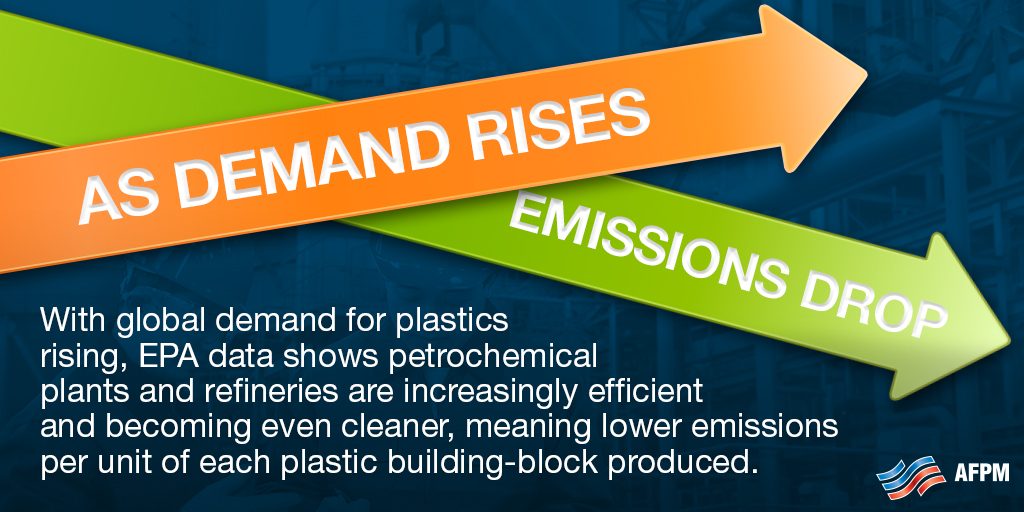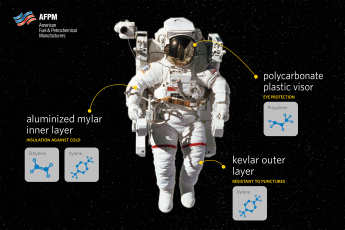If you read the headlines in the news lately — “Greenhouse Gas Emissions From Plastics Are Predicted to Rise,” “New Texas petrochemical projects add millions of tons of greenhouse gas pollution, report finds” — you’d think emissions from the petrochemical industry were getting worse. But the reality is exactly the opposite. Recent Environmental Protection Agency (EPA) data shows that petrochemical plants — which produce the building blocks for plastics — and refineries are increasing efficiency, and are set to become even more efficient and cleaner in the future, meaning lower emissions per unit of each plastic building block they produce.
The growth of the petrochemical industry is tied to the natural gas boom here in the United States, and a rising demand for plastics around the globe for everything from smartphones to helmets to building materials, toiletries, health care equipment, and even kitchen appliances. From the perspective of the American Fuel & Petrochemical Manufacturers, the headline should have been about a period of record growth to meet the needs of consumers, while shaving emissions.
Data from the EPA’s latest Greenhouse Gas Reporting Program found emissions per unit production at the nation’s refineries have decreased due to shifts in production and energy efficiency improvements. And despite a historic expansion in the petrochemical sector, carbon emissions only showed a slight overall uptick in 2017, according to EPA data.

The growth in plastics production has also drastically outpaced growth in global gross domestic product (GDP), and analyses show that as wealth increases, so does demand for plastic products. According to the International Energy Agency (IEA), advanced economies currently use up to 20 times more plastic than developing economies per capita. This reality underscores the huge potential for global growth in the years to come, as more developing and underdeveloped economies come to depend on key petrochemical products — from those that support and fill our homes and offices to those that make modern transportation and energy infrastructure possible.
According to IEA, sustaining this increase in petrochemical production while limiting increases in CO2 emissions will be driven largely by shifts to lighter feedstocks — which need less processing, and thus produce fewer CO2 emissions — and the development and adoption of increasingly energy efficient equipment and processes.
As we look to the future of petrochemical production, we are eager to see the ways that our member companies will revolutionize the industry by streamlining processes, reducing energy expenditures and emissions and developing new ways to reduce waste and reuse key products, such as the current investments being undertaken in the realm of carbon capture utilization and storage (CCUS). This should be — and is — a success story.


